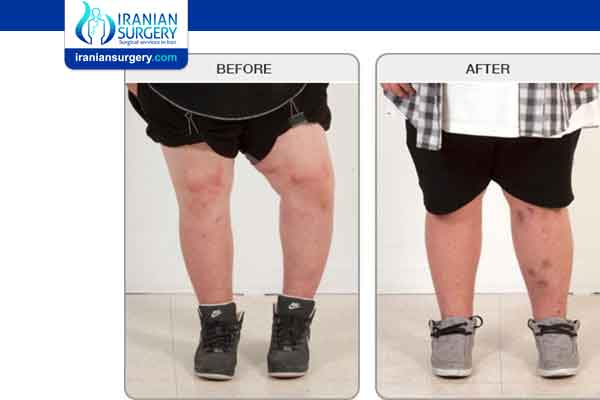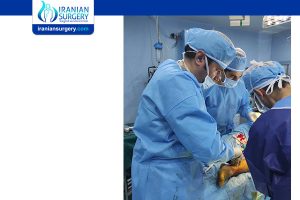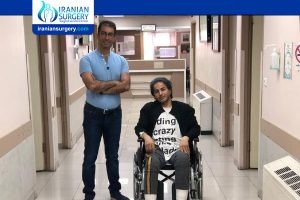Leg Lengthening Surgery Recovery

After Leg Lengthening Surgery
After your surgery, you will stay in a recovery room for several hours and then be transported to a hospital room. Most patients stay in the hospital for two to three days after the surgery. Sometimes a cast is placed on the leg for three to four weeks.
You will receive inpatient rehabilitation on the day of your surgery, where a physical therapist will assist you with getting in and out of bed, transferring to a chair and toilet, using a walker or crutches to walk, and going up and down stairs. You will not be able to bear any weight on the leg that was operated on during this time. Crutches are used for six to eight weeks.
Leg lengthening will start between a few days to a week after the surgery. This period between the operation and the beginning of leg lengthening is called the latency period, which allows for the areas of the bone that were cut to form a bone callus to protect the bone from further damage.

Read more about : The Swedish patient saved $ 90,000 by choosing Iran over the United States to have leg lengthening surgery.
Read more about : Siavash from Germany talks about his successful experience in leg lengthening surgery in Iran
Read more about : Leg lengthening surgery cost 2021
Read more about : Leg lengthening surgery before and after photos
Read more about : Leg lengthening surgery scars
Read more about : Success rate of limb lengthening surgery
Read more about : Walking after Leg Lengthening Surgery
Read more about : Running after Limb (Leg) Lengthening
Read more about : Limb Lengthening Surgery-External Fixators
Read more about : Lengthening over Nails (LON)
Recovery
After the operation is completed, you will undergo two phases of recovery, the distraction phase and consolidation phase.
. Distraction Phase
During the distraction phase, the leg bone that was cut will gradually be pulled apart by the fixation devices. This will promote distraction osteogenesis, during which the pressure applied to the bone by being pulled apart stimulates new bone growth at the site where the bone was cut for the osteotomy.
Bone growth continues as the gap between the bones is distracted, or increased, by ¼ mm four times a day for a total of a 1 mm increase each day. This process is repeated until the leg bone has achieved the desired length. Approximately 1 inch or 2.5 cm of length can be acquired each month.
During the distraction phase, you will use a walker or crutches to move around while maintaining a non-weight bearing status on your operated leg and attending physical therapy two to five times a week. It is crucial that you do not bear any weight on your leg by standing or walking during the distraction phase to allow your leg to heal properly.
Even though the typical rate of lengthening is 1 mm per day, some people take longer to heal and form new bone, especially those that smoke or have diabetes. Your doctor will want to see you every 7-14 days during this phase to make sure that the regenerated bone, muscles, and nerves are responding well to lengthening.

. Consolidation Phase
The second phase of treatment is the consolidation or healing phase, during which the new bone formation begins to harden and heal completely. You will gradually be able to put more weight on your leg and begin walking without crutches when your pain levels have decreased and you have built up enough strength in your leg to tolerate standing and walking without assistance.
Physical therapy plays an important role in maintaining proper joint mobility, range of motion, and leg strength, and can aid in your recovery after leg lengthening surgery.
For every month of lengthening, it can take an additional one to two months of recovery in the consolidation phase. The lengthening device will stay in the leg during the entire time of both the distraction and consolidation phases.
Read more about : Internal Limb Lengthening Surgery
Read more about : Leg Lengthening Surgery Before and After
__________________________________________________________________________________________________________________________________________
The mission of Iranian Surgery is to put international patients in direct contact with Iranian based medical centers through a user-friendly online platform.
We offer medical consultation to more than 1,500 people every month.
Our website has more than 200,000 monthly visitors.
We cooperate with top Iranian surgeons and hospital to find the best treatment for you.
Coping with Recovery
Recovery from leg lengthening surgery can be a tedious process as bone distraction and new growth must occur gradually over several weeks or months. The amount of time it takes the bone to heal depends on the amount of lengthening: Each centimeter of lengthening takes 36 days of healing.
After the surgery, you will need:
. Frequent visits to your healthcare provider to adjust the lengthening device. The amount of time the lengthening device is used depends on the amount of lengthening needed
. Special care of the pins or screws holding the device to prevent infection
. Supplements like vitamin D3 increase bone strength
Because the blood vessels, muscles, and skin are involved, it is important to check your skin color, temperature, and sensation of your foot and toes frequently. This will help monitor any changes to blood vessels, muscles, or nerves as early as possible.
It is important to follow all instructions from your surgeon and physical therapist to promote optimal healing and recovery for the best possible outcome. Recommendations for optimal recovery include:
. Prioritizing getting enough sleep at night, at least seven to eight hours, to promote healing.
. Eating a healthy diet and managing a healthy weight
. Staying hydrated
. Maintaining a positive attitude and learning how to cope with and manage stress
. Following your exercise program as prescribed by your physical therapist
. Staying active and limiting the amount of time you spend sitting each day
. Use crutches or a walker. Do not put weight on your leg until your doctor gives you permission.
Read more about : Is there any age limit for limb lengthening surgery?
Read more about : Is Limb Lengthening Surgery Safe?
Read more about : Does limb lengthening hurt?
Read more about : How Many Centimeters Can I Get after Leg Lengthening Surgery?
Read more about : Limb lengthening recovery time
Read more about : Internal limb lengthening surgery
Read more about : Leg lengthening recovery time
When to Call a Doctor
Contact your doctor if you experience any of the following:
. Signs of infection, such as fever or chills
. Redness, swelling, increasing pain, excessive bleeding, or discharge around the incision or pin and wire sites.
. Pain and/or swelling in the feet, calves, or legs
. Pain that you cannot control with the medication you were given
. Cough, shortness of breath, chest pain
. Severe nausea or vomiting
. Numbness, tingling, or loss of feeling in your leg, knee, or foot
. Problems or concerns about the fixation devices
Long-Term Care
There may be a residual decrease in muscle strength and power after limb-lengthening surgery, but it should not adversely affect your ability to perform everyday functional activities.
Bone lengthening is completely successful about four out of 10 times. It has a high rate of complications and need for further surgeries. Joint contractures (permanent tightening of the muscles, tendons, skin, and nearby tissues that causes the joints to shorten and become very stiff) may occur.
Possible Future Surgeries
Leg lengthening surgery can usually be performed to correct a leg length discrepancy of two inches at a time. If there is a larger discrepancy in leg length, the process may have to be repeated later on after the first round of surgery, distraction, and consolidation has successfully been completed.
After the consolidation phase has been completed and the new bone has fully solidified and healed, the lengthening device is then surgically removed. This is usually completed as an outpatient procedure and typically does not require staying overnight in a hospital. If an external fixator was used, you may have to wear a brace or cast for three to four weeks after removal.
Lifestyle Adjustments
While certain activities should be avoided, it is also very important that you limit how much time you spend sitting or lying in bed each day. Staying active is crucial for recovery and preventing deconditioning from a sedentary lifestyle.
Remember to:
. Avoid staying in one position for too long, which includes lying down, sitting, or standing.
. Try to get up and walk every one to two hours during the day to stay active and prevent blood clots. You can gradually increase the amount of time or distance you walk as you progress with recovery.
. Do not push yourself to do too much too soon. Overexerting yourself can increase your pain and delay your recovery.
. Attend all of your regularly scheduled physical therapy sessions as recommended by your doctor and follow up with a home exercise program prescribed by your physical therapist.
Read more about : Exercises after leg length discrepancy
Read more about : Limb Lengthening Surgery Pros and Cons
Read more about : Diagnosis code for leg length discrepancy
Read more about : What is the most common complication of bone lengthening using external fixation?
Read more about : Can my legs become shortened again after leg lengthening surgery?
Read more about : Limb length discrepancy treatment
Read more about : Causes of Limb Length Discrepancy
Read more about : Limb Length Discrepancy Symptoms
Read more about : Limb Length Discrepancy


